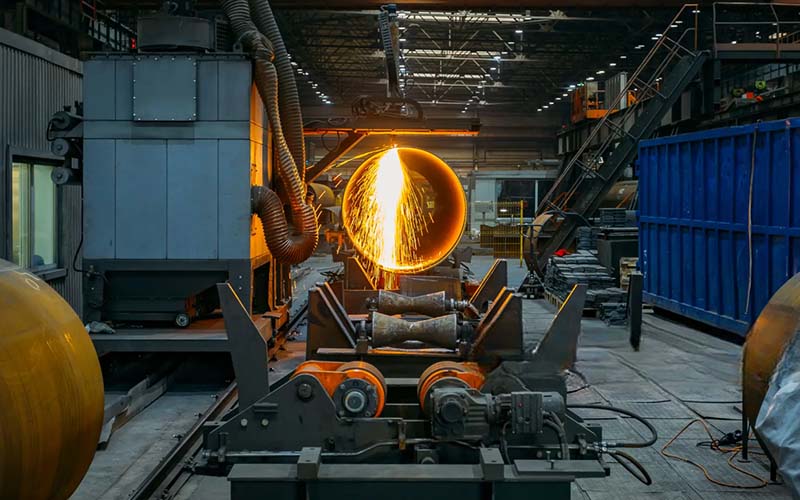Physical Address
304 North Cardinal St.
Dorchester Center, MA 02124
Physical Address
304 North Cardinal St.
Dorchester Center, MA 02124

Annealing is how we make metal better. It is a way to heat metal up and let it cool down slowly. This makes the metal softer and less likely to break. [^1]
When we anneal metal, we:
Big companies like Xometry, ASTM International, and ASM International use annealing a lot.
Annealing is easy to understand. We do three simple steps:
The metal gets very hot. This helps the tiny parts inside the metal move around. When they move, they find better spots to sit. This makes the metal better. [^2]
| Type of Metal | How We Cool It | How Long It Takes |
|---|---|---|
| Steel | In still air | Many hours |
| Copper | In air or water | Minutes |
| Silver | In air or water | Minutes |
| Brass | In air or water | Minutes |
There are many ways to anneal metal. Each way helps fix different problems.
We use full annealing for steel. We heat the steel very hot. Then we let it cool very slowly. This makes the steel very soft and easy to shape. [^3]
We use process annealing for metals that have been cold-worked. Cold-worked means the metal was bent or shaped when it was cold. This can make the metal hard and brittle. Process annealing makes it soft again.
We use stress relief annealing for parts that have been welded. Welding can make parts of the metal very stressed. This annealing takes the stress away. [^4] A case study showed that aerospace parts had 70% fewer cracks after stress relief annealing!
We use spheroidizing for high-carbon steels. This makes the steel easier to cut and shape. Car gear makers found that parts lasted 40% longer after this type of annealing.
We use bright annealing when we don’t want the metal to get rusty or dark during heating. We heat the metal in a place with no air.
Many kinds of metal get better with annealing.
Ferrous metals have iron in them. These include:
Non-ferrous metals don’t have iron. These include:
Annealing can make copper wires work 90% better! This is very good for making things like computers and phones. [^5]
We use annealed metals to make many things:
But there’s good news! New ways to anneal can save:
We keep finding better ways to anneal metals.
Induction annealing uses special electricity to heat metal fast. It:
Batch annealing means we heat a lot of metal at once. Continuous annealing means the metal moves through a hot area on a belt. This is good for making long things like wire.
People have been annealing for a very long time. In the Middle Ages, blacksmiths would heat metal in fire. The word “anneal” comes from an old word “anelen” which means “to set on fire.” During the Industrial Revolution, people found better ways to anneal. They made big ovens that could get very hot and stay hot for a long time.
Water annealing is a quick way to make carbon steel softer. It can:
Here are some important facts about annealing:
| Fact | Number |
|---|---|
| Time in salt bath for carbon steel | 10+ minutes |
| Energy savings with new methods | 30-50% |
| Reduction in cracks for aerospace parts | 70% |
| Improvement in copper wire performance | 90% |
| Automotive parts durability increase | 40% |
Annealing is a very helpful way to make metal better. We heat metal, keep it hot, and let it cool slowly. This fixes many problems like stress, hardness, and brittleness. Different types of annealing help different metals. Full annealing helps steel. Stress relief annealing helps welded parts. Bright annealing keeps metals looking nice. New ways to anneal save time, energy, and money. Induction annealing is fast and exact. From the Middle Ages to today, annealing has helped us make better things from metal. Big names like Xometry, ASTM International, and ASM International set rules for how to anneal the right way. So next time you see a car, phone, or plane, remember that annealing helped make the metal parts work better!